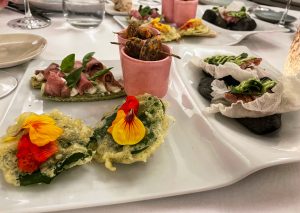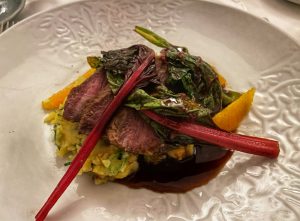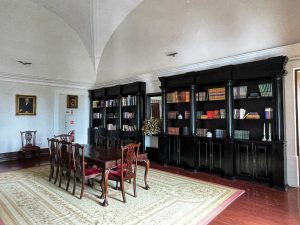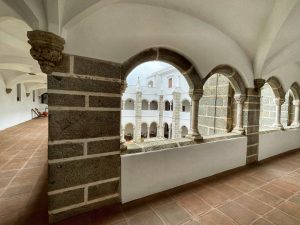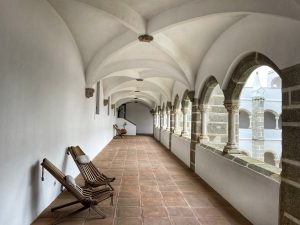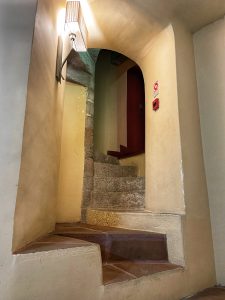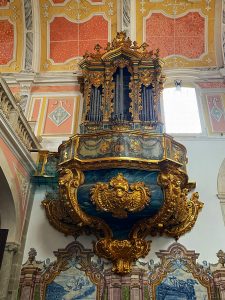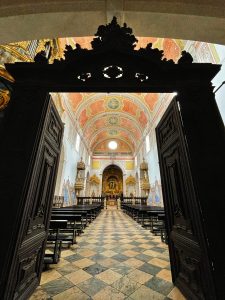DAY 13 – Evora rest day Apr 11
Evora – Rest Day
Evora is an excellent spot for a rest day with a well contained fascinating medieval centre with lots to explore and enjoy. Unfortunately it is very windy today and raining cats and dogs or as the Portuguese might say, ‘chovendo cantaros’, but we managed to see a bit before the rain took over. But we did get to see some of the old town last night at sunset.
Of course a beautiful sumptuous breakfast…note that the pastel da nata right up front!…I wolfed a few more of those down!! 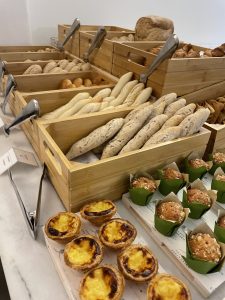 And the bread in Portugal is varied and all delicious!
And the bread in Portugal is varied and all delicious!
Inside the 14th-century walls, Évora’s narrow, winding lanes lead to striking architectural works: an elaborate medieval cathedral and cloisters, the cinematic columns of the Templo Romano (near the intriguing Roman baths), and a picturesque town square – once the site of some rather gruesome episodes courtesy of the Inquisition. Aside from its historic and aesthetic virtues, Évora is also a lively university town, and its many attractive restaurants serve up hearty Alentejan cuisine.
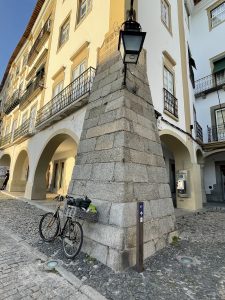
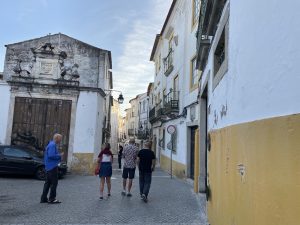
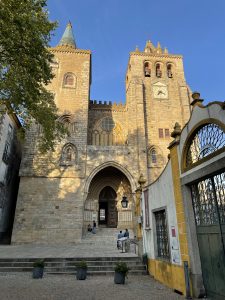

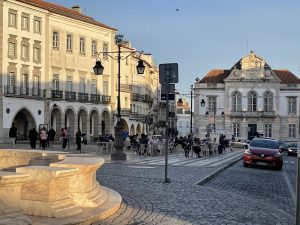
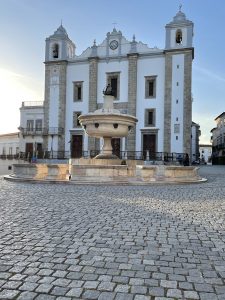


Templo Romano
Once part of the Roman Forum, the remains of this temple, dating from the 2nd or early 3rd century AD, are a heady slice of drama right in town. It’s among the best-preserved Roman monuments in Portugal, and probably on the Iberian Peninsula. Though it’s commonly referred to as the Temple of Diana, there’s no consensus about the deity to which it was dedicated, and some archaeologists believe it may have been dedicated to Julius Caesar.

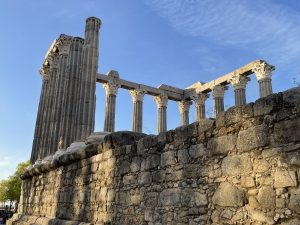
How did these 14 Corinthian columns, capped with Estremoz marble, manage to survive in such good shape for some 18 centuries? The temple was apparently walled up in the Middle Ages to form a small fortress, and then used as the town slaughterhouse. It was uncovered late in the 19th century. These unwitting preservation techniques worked, as the imposing colonnade is stunningly complete.
Igreja de São João
The small, fabulous Igreja de São João which faces the Templo Romano, was founded in 1485 by one Rodrigo Afonso de Melo – count of Olivença and the first governor of Portuguese Tangier – to serve as his family’s pantheon. It is still privately owned by the Duques de Cadaval and notably well kept.
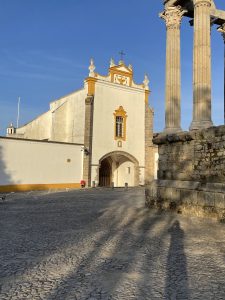

Behind its elaborate Gothic portal is a nave lined with fantastic floor-to-ceiling azulejos produced in 1711 by one of Portugal’s best-known tile-makers, António de Oliveira Bernardes. The grates in the floor expose a surprising underworld: you can see a deep Moorish cistern that pre-dates the church and an ossuary full of monks’ bones. In the sacristy beyond are fragments of even earlier azulejos.
After exploring the church, head next door to the Palácio Cadaval with its collection of illuminated manuscripts, Arraiolos carpets and 18th-century paintings of Portuguese royals.
Capela dos Ossos
One of Évora’s most popular sights is also one of its most chilling. The walls and columns of this mesmerising memento mori (reminder of death) are lined with the bones and skulls of some 5000 people. This was the solution found by three 17th-century Franciscan monks for the overflowing graveyards of churches and monasteries.
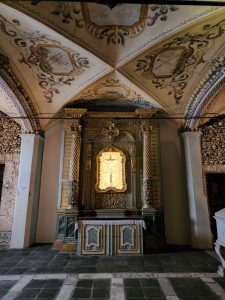
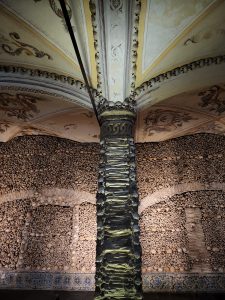
There is black humour to the way the bones and skulls have been arranged in patterns, and the whole effect is strangely beautiful, though probably not one you’d be inspired to re-create at home. An inscription over the entrance translates as ‘We bones that are here await yours’. Above the chapel, a museum contains works of religious art and a terrace with views over town.(kudos to Tony and Jo and Enrico for photo help)
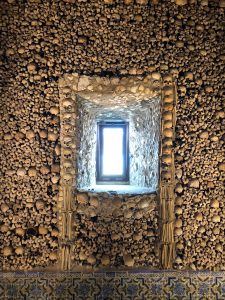
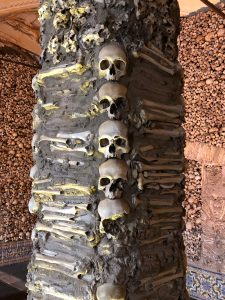
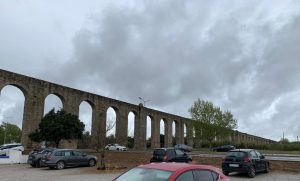
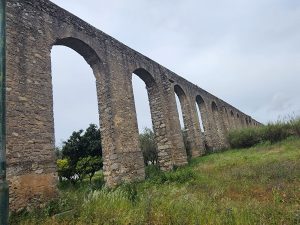


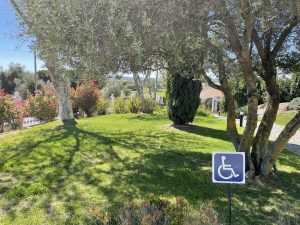


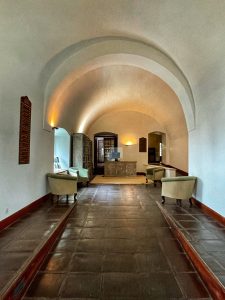
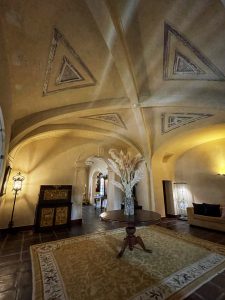
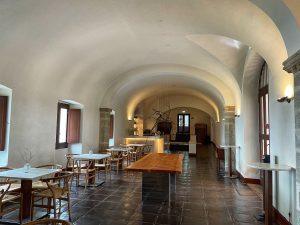
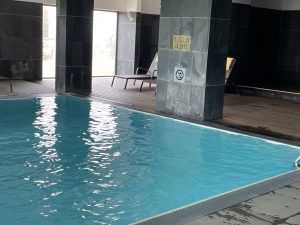
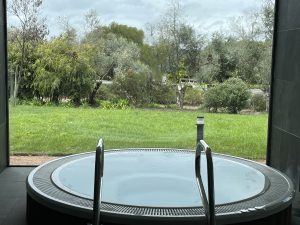
 I’m pretty sure the monks didn’t have the indoor/outdoor pools, hot tubs, saunas and spa treatments, but they still had it good!.
I’m pretty sure the monks didn’t have the indoor/outdoor pools, hot tubs, saunas and spa treatments, but they still had it good!.